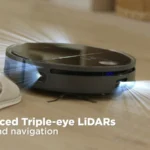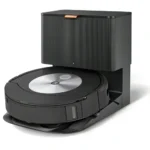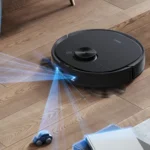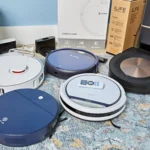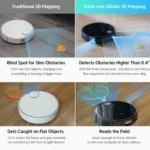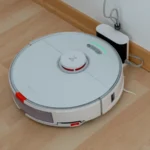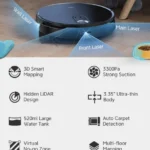Have you ever wondered how smart vacuum cleaners manage to navigate around obstacles like furniture and household items? It seems almost magical, doesn’t it? These robots roam around your house, effortlessly avoiding objects and leaving behind spotless floors. However, the secret to their success lies in their advanced obstacle detection and avoidance systems. In this article, we’ll explore the technology that enables these machines to detect and steer clear of obstacles. So, without further delay, let’s dive into the world of smart vacuum cleaners and discover the science behind their remarkable obstacle detection and avoidance capabilities.
What is Obstacle Detection in Smart Vacuum Cleaners?
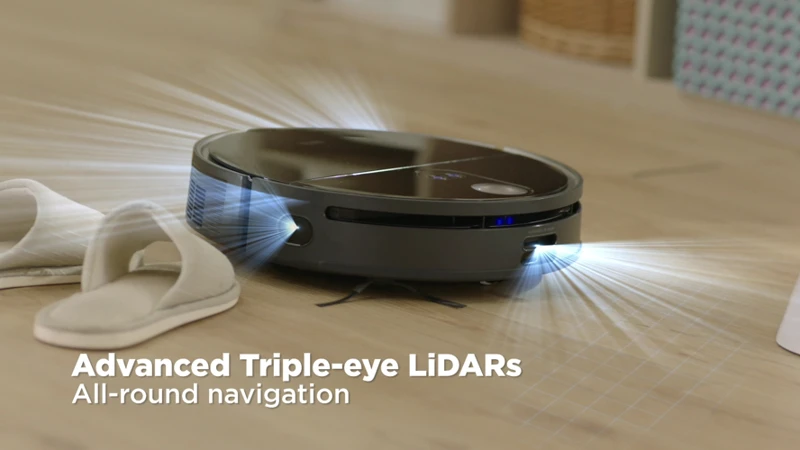
The ability of smart vacuum cleaners to detect and avoid obstacles is one of their most impressive features. It is what makes them efficient, safe, and reliable when it comes to cleaning various surfaces. Obstacle detection is a complex technology that involves multiple sensors, software algorithms, and artificial intelligence. It helps the vacuum cleaner to navigate around furniture, walls, stairs, and other objects that can obstruct its path. In this section, we will explore the different methods that smart vacuum cleaners use to detect obstacles and how they work. By the end of it, you will have a deeper understanding of the inner workings of these smart devices. If you’re interested in the benefits of obstacle detection and avoidance, check out our article on how it improves cleaning performance.
3D Mapping and Sensors
One of the most crucial elements of obstacle detection in smart vacuum cleaners is 3D mapping and sensors. These devices work together to give the machine a comprehensive picture of its surroundings, allowing it to navigate around obstacles with ease.
Sensors: The sensors used for obstacle detection in smart vacuum cleaners include infrared, ultrasonic, and optical sensors. They can detect the presence of obstacles such as walls, chairs, and other furniture items. These sensors send signals to the central processing unit of the robot vacuum, which are then analyzed to determine the obstacle’s position and distance.
3D Mapping: 3D mapping is used to create a virtual map of the room, which is overlaid with obstacle detection data. To map a room, the smart vacuum cleaner uses a combination of sensors and cameras to scan the space and identify objects in the environment.
Once obstacles are detected, the smart vacuum cleaner uses the 3D map and sensor data to determine the best path to take to avoid the objects in its way. This real-time decision-making capability makes these machines even smarter, as they can avoid obstacles on-the-fly and continue cleaning without interruptions.
Smart Vacuum Obstacle Detection Performance: Obstacle detection and avoidance are critical performance factors of smart vacuums. Thanks to 3D mapping and sensors, these machines can navigate around furniture, stairs, and other obstacles without collisions or injuries. The Smart Vacuum Obstacle Performance article describes how this technology works and its impact on smart vacuum’s efficiency.
Integrating Obstacle Detection into Smart Homes: As smart home technology continues to evolve, the integration of obstacle detection in smart vacuums is becoming increasingly important. The article Integrate Obstacle Detection into Smart Home explains how this can be achieved and the benefits it brings.
Smart Vacuum Obstacle Technology: Obstacle detection technology is one of the key features of smart vacuum cleaners. The Smart Vacuum Obstacle Tech article talks about the different types of obstacle detection technologies used in these machines, including 3D mapping and sensors.
3D mapping and sensors are the cornerstone of obstacle detection in smart vacuum cleaners. These technologies work together to create a virtual map of the room and detect obstacles in real-time, allowing the smart vacuum cleaner to navigate around them with ease.
Camera-based Detection
Camera-based Detection: Another approach to obstacle detection in smart vacuum cleaners uses cameras to capture images of the surroundings. These images are then analyzed to detect any objects present in the path of the vacuum cleaner.
| Advantages | Disadvantages |
|---|---|
| – Can detect a wide range of objects, including small ones – Higher accuracy compared to other methods |
– Requires good lighting conditions – Processing time can be longer, leading to slower performance |
One issue with camera-based detection is that it requires good lighting conditions. If the room is too dark or if there are strong shadows, then the camera may not be able to properly detect obstacles in the way. Additionally, processing the images captured by the camera can take more time than other methods, which could lead to slower performance in some cases.
Despite these limitations, camera-based detection is still a powerful tool for obstacle detection and avoidance in smart vacuum cleaners. Their ability to detect a wide range of objects, including small objects, makes them ideal for efficient cleaning. To learn more about the performance of smart vacuum cleaners with obstacle detection, check out this article. And to learn about how obstacle detection can be integrated into a smart home system, visit this page. For more technical details on obstacle detection technology, take a look at this article.
Cliff Detection
Cliff detection is a critical technology for smart vacuum cleaners. It allows the vacuum cleaner to perceive the drop-off or cliffs such as stairs to avoid falling off or damaging itself. The cliff detection technology is essential for providing safe cleaning experience and enhancing the lifespan of the device.
The technology works by detecting the change in distance between the floor and the vacuum cleaner. When the distance becomes too large, the device understands that there is an abrupt drop-off, and it should avoid it. To detect the cliff, smart vacuum cleaners use infrared or laser sensors that continuously scan the surface beneath them.
The table below illustrates the differences in cliff detection sensors used in smart vacuum cleaners.
| Cliff Detection Sensors | Advantages | Disadvantages |
|---|---|---|
| Infrared Sensors |
|
|
| Laser Sensors |
|
|
Both infrared and laser sensors have their advantages and disadvantages when it comes to cliff detection. Infrared sensors, for example, are more affordable and can detect black and white floor surfaces; however, they may not be as accurate and may be sensitive to sunlight and bright light. On the other hand, laser sensors are highly accurate and provide independent floor shape information, but they can be expensive and may leave a gap at the cliff’s edge.
Cliff detection technology is a crucial aspect of smart vacuum cleaner technology. It helps to provide safe, efficient, and hassle-free cleaning experience. Whether the smart vacuum cleaner utilizes infrared or laser sensors, the key takeaway is that the device should sense the cliff drop-off and avoid the potential damage or accidents.
Gyroscopes and Accelerometers
Smart vacuum cleaners also use gyroscopes and accelerometers to navigate around obstacles. These sensors help the device to track its location and orientation in space.
Gyroscopes are devices that measure the rate of rotation or angular velocity of an object. In smart vacuum cleaners, gyroscopes provide information about the device’s orientation and movement in space. Accelerometers measure acceleration and change in the velocity of an object. In smart vacuum cleaners, they measure the device’s speed and direction changes as it moves around.
By combining the data from gyroscopes and accelerometers, smart vacuum cleaners can accurately determine their position and how they are moving through the room. These sensors allow the device to adjust its cleaning pattern based on its orientation and location within the room.
However, gyroscopes and accelerometers do have some limitations. These sensors are highly sensitive to movements and vibrations, which can affect the accuracy of the device’s position and orientation tracking. Additionally, changes in temperature, humidity, and air pressure can affect the operation of these sensors.
Despite these limitations, gyroscopes and accelerometers remain an essential component of obstacle detection and avoidance systems in smart vacuum cleaners. They provide valuable data to help the device navigate around obstacles and efficiently clean the entire room.
Working of Obstacle Avoidance in Smart Vacuum Cleaners
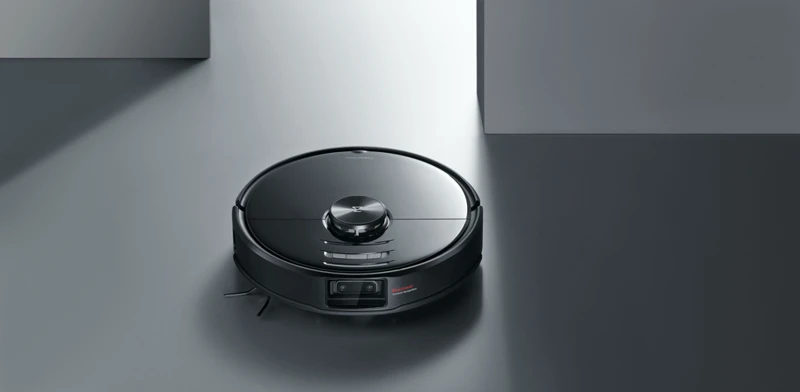
As we’ve seen in the previous section, obstacle detection is an essential function of a smart vacuum cleaner. However, detecting obstacles isn’t enough by itself – the robot must be able to navigate around them. That’s where obstacle avoidance comes in. In this next section, we’ll take a closer look at how smart vacuum cleaners use advanced algorithms to navigate around obstacles and clean efficiently. Let’s dive in!
Path Planning Algorithms
Path planning algorithms are the backbone of how smart vacuum cleaners navigate and avoid obstacles. These algorithms are able to map out an entire room and plan the most efficient path to clean it.
One commonly used path planning algorithm is A-star (A*). This algorithm divides the floor into a grid of squares and assigns each square a weight based on its obstacle density. The smart vacuum cleaner then calculates the shortest path from its starting position to its end position, avoiding any obstacles in its way.
Another popular algorithm is potential fields. This approach uses a “force field” to represent the obstacles in a room. The smart vacuum cleaner is attracted to the goal location and repelled by the obstacles around it. As it moves towards the goal, the force field adjusts to allow the vacuum cleaner to avoid obstacles and reach its destination.
Finally, some vacuum cleaners use the randomized spiral algorithm. This algorithm has the vacuum cleaner start in the center of a room and move in a spiral pattern until it reaches the perimeter. Once it reaches the perimeter, it moves along the edge of the room until it has covered the entire floor. This algorithm is often used in robotic lawn mowers as well.
Path planning algorithms are what make smart vacuum cleaners truly “smart” and able to navigate around obstacles in a room with ease.
| Algorithm | Description |
|---|---|
| A-star | Divides floor into squares, assigns weight based on obstacle density, calculates shortest path |
| Potential Fields | Uses “force field” to represent obstacles, attracts vacuum cleaner to goal location and repels from obstacles |
| Randomized Spiral | Starts in center of room, moves in spiral pattern to perimeter, follows perimeter until entire floor is covered |
Real-time Obstacle Avoidance
Smart vacuum cleaners use advanced algorithms for real-time obstacle avoidance. This ensures that the vacuum cleaner can detect and avoid obstacles in real-time, without stopping or getting stuck.
Real-time obstacle avoidance system is made up of various sensors that enable the smart vacuum cleaner to perceive its surroundings and make real-time decisions. These sensors include 3D mapping sensors, cameras, gyroscopes, and accelerometers.
When the vacuum cleaner encounters an obstacle, it uses these sensors to identify the type of obstacle, as well as its size and location. This information is then fed into the vacuum cleaner’s algorithm, which calculates the best possible path to avoid the obstacle.
The algorithm takes into account various factors, such as the vacuum cleaner’s current location, the location and size of the obstacle, as well as other obstacles in the area. This allows the vacuum cleaner to avoid obstacles in a natural and efficient manner, without wasting time or energy.
To ensure that the real-time obstacle avoidance system works smoothly, the vacuum cleaner must constantly update its sensor readings and adjust its path. This requires advanced computing power, which is provided by the vacuum cleaner’s on-board processor.
In addition to obstacle detection and avoidance, smart vacuum cleaners also have other advanced features, such as voice control, room mapping, and self-charging. This makes them highly efficient and user-friendly devices that can help you keep your home clean without much effort.
Real-time obstacle avoidance is a critical feature of modern smart vacuum cleaners. It ensures that the vacuum cleaner can operate efficiently and safely, without any risk of damage to your furniture or other belongings. As technology continues to advance, we can expect to see even more advanced obstacle avoidance systems in the future, making cleaning your home even easier and more convenient.
| Pros | Cons |
|---|---|
| – Efficient cleaning | – Limitations in accuracy |
| – Saves time and energy | – Sensitive to light |
| – Safer for pets and kids | – High cost |
Benefits of Obstacle Detection and Avoidance
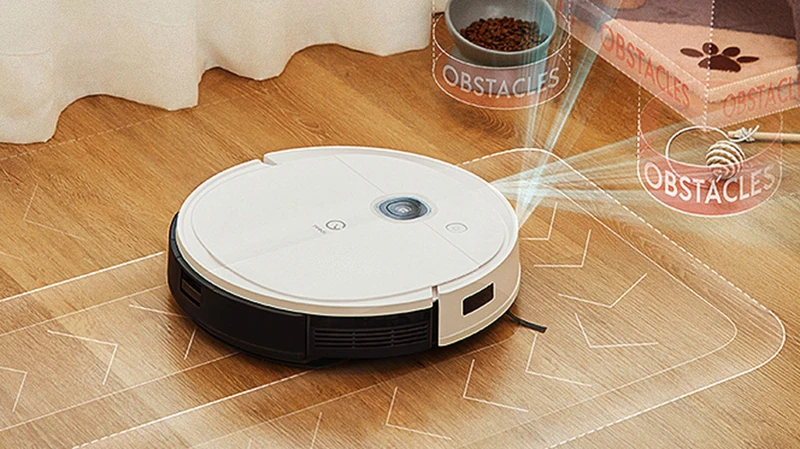
Having obstacle detection and avoidance technology in smart vacuum cleaners brings a host of benefits that make cleaning more efficient, safe, and stress-free. With obstacle detection, smart vacuum cleaners can accurately navigate your home, avoiding obstacles such as furniture, walls, and stairs, while efficiently cleaning every corner and crevice. This not only makes cleaning easier for you, but it also reduces the risk of accidents and damage caused by traditional vacuum cleaners. Additionally, the use of such technology ensures the safety of your pets and children. However, there are also some limitations to consider, which we will discuss later in this article.
Efficient Cleaning
One of the major benefits of obstacle detection and avoidance in smart vacuum cleaners is efficient cleaning. With the help of advanced technologies like 3D mapping, sensors, camera-based detection, and path planning algorithms, these devices can navigate through the house and avoid obstacles, allowing them to efficiently clean every nook and cranny of your home.
A smart vacuum cleaner with obstacle detection and avoidance can easily detect furniture, toys, and other objects that might be lying around on the floor. It can then change its path or slow down its speed to avoid collision, ensuring that the cleaning process is carried out without interruption. This results in efficient cleaning as the device can cover a larger area and clean more thoroughly without getting stuck or requiring manual intervention.
With the help of real-time obstacle avoidance, smart vacuum cleaners can detect and avoid objects in real-time, making them much faster and efficient at cleaning. These devices can easily navigate through complex environments and clean multiple rooms in a single session without requiring any manual assistance.
| Benefits of Obstacle Detection and Avoidance in Smart Vacuum Cleaners |
|---|
| Efficient Cleaning |
| Fewer Accidents and Damage |
| Safer for Pets and Children |
The incorporation of obstacle detection and avoidance technologies in smart vacuum cleaners has greatly improved their cleaning efficiency. These devices can easily navigate through complex environments and efficiently clean every corner of your home without any interruptions.
Fewer Accidents and Damage
When it comes to using smart vacuum cleaners for cleaning our homes, avoiding accidents, and reducing damage is of utmost importance. With advanced obstacle detection and avoidance systems, smart vacuum cleaners have become a safer option for us and our homes.
Reduction in Accidents
Traditional vacuum cleaners can get stuck, fall off stairs, or collide with obstacles, causing damage to both the machine and the surroundings. Smart vacuum cleaners equipped with obstacle detection and avoidance technology can detect the presence of obstacles in their path using a variety of sensors, cameras, LIDAR, and path planning algorithms. This allows them to avoid collisions and navigate around obstacles, thus reducing the risk of accidents significantly.
Less Damage to Objects
In addition to reducing accidents, smart vacuum cleaners also cause minimal damage to objects and furniture in the house. The sensors and algorithms used in these devices can detect the presence of furniture, walls, and other objects in their path and adjust their movement accordingly. This not only protects the smart vacuum cleaners but also prevents the objects from being damaged by the vacuum cleaner’s brushes and suction power.
Protection for Pets and Children
Smart vacuum cleaners come with safety measures to avoid accidents caused by pets and children. Obstacle detection technology enables smart vacuum cleaners to detect the presence of pets and children and slow down their movement or change direction to avoid collisions. This ensures that pets and children remain safe and prevents them from being accidentally hurt by the vacuum cleaners.
Here’s a table highlighting the benefits of obstacle detection and avoidance technology in smart vacuum cleaners in terms of reducing accidents and damage:
| Benefit | Description |
|---|---|
| Reduction in Accidents | Smart vacuum cleaners with obstacle detection and avoidance systems can detect obstacles in their paths and avoid collisions, thus reducing the risk of accidents. |
| Less Damage to Objects | Obstacle detection technology enables smart vacuum cleaners to detect and avoid furniture, walls, and other objects, preventing damage to both the machine and the objects in its path. |
| Protection for Pets and Children | Smart vacuum cleaners equipped with advanced obstacle detection technology can detect the presence of pets and children and slow down or change direction to avoid collisions, thus ensuring their safety. |
Obstacle detection and avoidance systems in smart vacuum cleaners are game-changers in terms of safety and efficiency. With these systems in place, smart vacuum cleaners not only help us keep our homes clean but also keep our loved ones and surroundings safe.
Safer for Pets and Children
Smart vacuum cleaners with obstacle detection and avoidance technology are a must-have for those who have pets and young children at home. This technology ensures that these cleaning gadgets could operate safely around them without any harm.
With the traditional vacuum cleaners, pets and children can unwittingly get in the way of the gadgets and may cause accidents. However, with smart vacuum cleaners, this problem is solved by using sensors and 3D mapping technology. The vacuum cleaners identify obstacles in their path and then avoid them swiftly, with minimal disturbance to people or pets. They could even sense fragile objects easily and keep from causing damage to them.
Pets can also cause a problem with traditional vacuum cleaners because of the noise they make. Many pets are scared of the sound of vacuum cleaners and get anxious around them. However, with the obstacle avoidance feature, smart vacuum cleaners can run comparatively quietly and safely. These devices could maintain a relatively low sound level, keeping pets calm as they carry out their cleaning tasks.
Young children at home can also cause problems with regular vacuum cleaners, as they can accidentally turn them on or get their fingers caught in the mechanism. Obstacle detection and avoidance in smart vacuum cleaners make them safer around playing children, as they can detect any moving objects in their path and stop automatically if they identify a potential danger. These gadgets could not be turned on easily by kids, so there is no risk of any accidents involving them.
Smart vacuum cleaners with obstacle detection and avoidance technology are safer for pets and children alike. They offer peace of mind to their owners that they could operate safely and securely in a home with pets and children present.
Limitations of Obstacle Detection and Avoidance
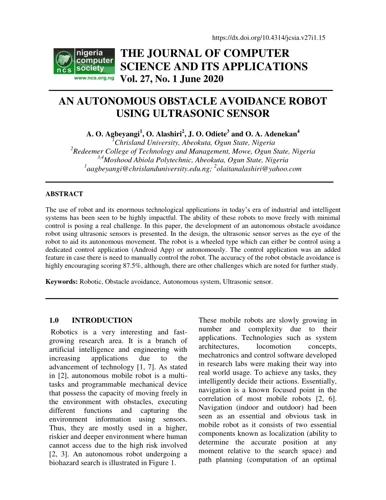
While obstacle detection and avoidance technology in smart vacuum cleaners has come a long way, it still has its limitations. These limitations can hinder the effectiveness of the technology, and may even cause damage to the vacuum cleaner or the objects around it. It’s important to understand these limitations and weigh them against the benefits before investing in a smart vacuum cleaner with obstacle detection and avoidance features. In this section, we’ll explore some of the limitations of this technology and what they mean for users.
Accuracy Issues
One possible write-up for this section could be:
While obstacle detection and avoidance systems in smart vacuum cleaners have come a long way in recent years, there are still some accuracy issues that can affect their performance. These issues can stem from various factors, such as the type of sensors used, the calibration of the system, or the complexity of the environment. Here are some examples of accuracy issues that users may encounter:
| Issue | Description | Impact | |
| User | Device | ||
| False Positives | When the system detects an obstacle that does not actually exist, e.g. due to a reflection or a pattern in the surface. | Annoyance, time wasted | Battery drain, wear and tear |
| False Negatives | When the system fails to detect an obstacle that is present, e.g. due to poor lighting or an unusual shape. | Damage, injury | Device malfunction, warranty claims |
| Localization Errors | When the system is not able to accurately determine its position in the environment, which can lead to incorrect path planning or collision avoidance. | Inefficiency, missed spots | Navigation errors, falls from stairs |
These accuracy issues can cause frustration or even safety hazards for users, while also affecting the longevity and reliability of the device. However, it’s worth noting that not all smart vacuum cleaners are equally affected by these issues, and some models may have better sensors or algorithms that mitigate them. Manufacturers are constantly improving their designs and software updates to address these issues and make their products more accurate and user-friendly.
Sensitivity to Light Levels
Sensitivity to Light Levels is one of the limitations of obstacle detection and avoidance systems in smart vacuum cleaners. These systems utilize a variety of sensors, including cameras, infrared sensors, and laser scanners, to navigate their environments. However, they can be affected by the lighting conditions in a room, which can impact their performance.
The sensitivity of obstacle detection systems to light levels can be categorized as follows:
| Low-light Sensitivity | Brightness Overload |
|---|---|
| Low-light sensitivity can impact the sensors in a smart vacuum cleaner, particularly those that rely on the infrared spectrum. Infrared sensors emit infrared light to detect obstacles and can struggle in low-light conditions, resulting in reduced accuracy or even detection failure. | Brightness overload occurs when the sensors receive too much light, particularly from a strong light source like the sun. This excess of light can cause the sensors to overload, leading to inaccurate readings or detection failure. |
Some methods for overcoming the limitations of sensitivity to light levels in smart vacuum cleaners include:
– Using sensors that can adjust to changes in lighting conditions, such as those that can automatically switch between infrared and visible light sensors.
– Making use of artificial intelligence and machine learning algorithms that can help the sensors account for changes in lighting conditions.
– Ensuring that rooms are evenly lit, either through natural or artificial lighting, to reduce the impact of changes in lighting conditions.
While sensitivity to light levels can be a limitation of obstacle detection and avoidance systems in smart vacuum cleaners, advancements in sensor technology and machine learning algorithms are helping to overcome this limitation and improve the overall performance of these systems.
Cost
The cost of incorporating obstacle detection and avoidance technology into smart vacuum cleaners is a significant factor that must be considered. Though the feature is beneficial, the addition of the technology to a vacuum cleaner is likely to increase its price. Here are some of the cost-related limitations of obstacle detection and avoidance in smart vacuum cleaners:
- High Initial Cost: Since obstacle detection and avoidance technology uses a combination of sensors, cameras, and other advanced devices, it makes smart vacuum cleaners more expensive to produce. In turn, this cost is passed on to the buyers, making the product more expensive.
- Maintenance Cost: Smart vacuum cleaners that come equipped with obstacle detection and avoidance technology may require regular maintenance to keep the technology functioning optimally. This maintenance may involve replacing sensors, cameras, or other components, which could further increase the overall cost of the product over its lifetime.
- Repair Cost: In the event that an obstacle detection or avoidance system becomes damaged or malfunctions, repair costs can be high. The complex nature of these systems means that a specialized technician may be required to repair them, and parts can be difficult to find.
Despite the cost limitations of obstacle detection and avoidance technology in smart vacuum cleaners, it is important to note that the benefits of this technology far outweigh the cost. Additionally, with advancements in technology, it is likely that the cost of incorporating these features will decrease over time.
Future of Obstacle Detection and Avoidance in Smart Vacuum Cleaners
The future of obstacle detection and avoidance in smart vacuum cleaners is looking bright. As technology continues to advance rapidly, so do the capabilities and features of these devices. One major area of development is in the use of Artificial Intelligence (AI) and Machine Learning (ML) to enhance the accuracy and efficiency of obstacle detection and avoidance.
AI and ML: With AI and ML, smart vacuum cleaners have the ability to analyze and learn from the environment around them. They can detect and recognize different types of objects, learn how to navigate around obstacles, and adapt to new environments. This means that the device will become even more efficient in cleaning the house.
Improved 3D Mapping: With advanced 3D mapping technology, smart vacuum cleaners will have a more precise understanding of the layout of the house. This means more accurate and efficient cleaning, as well as better obstacle detection and avoidance.
Integration with Smart Home Systems: In the future, smart vacuum cleaners will become even more integrated with smart home systems. This will enable them to interact with other devices, such as cameras and sensors, to better detect and avoid obstacles.
Increased Customization: As smart vacuum cleaners become more sophisticated, users will be able to customize the device to their specific needs. This may include setting up custom cleaning schedules, adjusting the sensitivity of the sensors, or even selecting different cleaning modes for specific areas of the house.
Advancements in Battery Technology: With the emergence of more efficient and powerful batteries, smart vacuum cleaners will be able to operate for longer periods of time without needing to recharge. This means that they will be able to cover larger areas of the house and clean for longer periods of time.
The future of obstacle detection and avoidance in smart vacuum cleaners is looking very promising. With the use of AI and ML, improved 3D mapping, increased customization, and advancements in battery technology, smart vacuum cleaners are set to become even more efficient, effective, and user-friendly.
Conclusion
In conclusion, the obstacle detection and avoidance technology in smart vacuum cleaners has revolutionized the way we view household chores. With the ability to detect and navigate around obstacles, these devices have made cleaning more efficient and convenient than ever before.
Through the use of 3D mapping and sensors, camera-based detection, cliff detection, gyroscopes and accelerometers, the smart vacuum cleaners are able to detect and respond to obstacles in real time. This technology has enabled these devices to clean more efficiently and avoid potential accidents or damage.
The benefits of obstacle detection and avoidance are many, including fewer accidents and damage, safer for pets and children, and efficient cleaning. However, there are also limitations to this technology, including accuracy issues, sensitivity to light levels, and cost.
Despite these limitations, the future of obstacle detection and avoidance in smart vacuum cleaners is promising. As technology continues to advance, we can expect to see even more sophisticated systems that are capable of efficient cleaning and accurate obstacle detection and avoidance.
In summary, with the rise of smart home technology, obstacle detection and avoidance in smart vacuum cleaners has paved the way for a more convenient and efficient way of cleaning our homes. As this technology continues to evolve and improve, we can expect to see even greater progress in the years to come.
Frequently Asked Questions
Can smart vacuum cleaners detect and avoid obstacles while cleaning?
Yes, smart vacuum cleaners are equipped with sensors and mapping technology that allow them to detect and avoid obstacles while cleaning.
What types of sensors do smart vacuum cleaners use for obstacle detection?
Smart vacuum cleaners use a variety of sensors, including 3D mapping sensors, camera-based sensors, cliff sensors, gyroscopes, and accelerometers.
How do 3D mapping sensors work in smart vacuum cleaners?
3D mapping sensors emit infrared light waves that bounce off nearby objects, allowing the vacuum cleaner to create a map of its surroundings and detect obstacles.
Can smart vacuum cleaners detect and avoid small objects like toys or socks?
In most cases, yes. Smart vacuum cleaners are designed to detect and avoid objects of all sizes, though some models may be more sensitive than others.
How does path planning technology work in smart vacuum cleaners?
Path planning technology uses algorithms to map out the optimal cleaning path for the vacuum cleaner, taking into account obstacles, room layout, and other factors.
Are there any limitations to obstacle detection and avoidance technology in smart vacuum cleaners?
Yes, some common limitations include accuracy issues, sensitivity to light levels, and higher costs compared to traditional vacuum cleaners.
How can obstacle detection and avoidance technology benefit pet owners?
Obstacle detection and avoidance technology can help pet owners keep their homes clean and safe for their pets, as the vacuum cleaner can avoid disturbing or injuring them during cleaning.
What types of surfaces can smart vacuum cleaners navigate?
Smart vacuum cleaners can navigate a variety of surfaces, including hardwood floors, carpeted surfaces, and tile floors.
How can obstacle detection and avoidance technology benefit households with children?
Obstacle detection and avoidance technology can help households with children maintain a safe and clean home, as the vacuum cleaner can avoid collisions with toys or other objects that may pose a danger to young children.
Is obstacle detection and avoidance technology essential for effective vacuum cleaning?
No, obstacle detection and avoidance technology is not essential for effective vacuum cleaning, but it can help improve efficiency and safety of the cleaning process.

